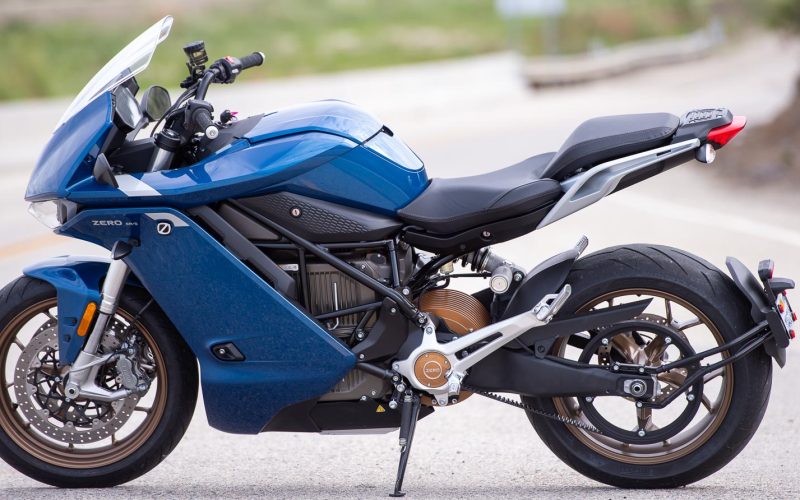For many riders, the cost of motorcycle maintenance is a key consideration before making a purchase. While bikes are generally cheaper than cars in terms of initial cost, insurance, and fuel, the long-term upkeep can surprise some first-time owners. Understanding what to expect when it comes to motorcycle maintenance costs will help you plan better and make more informed decisions — especially if you’re shopping for affordable used motorcycles.
This guide breaks down common maintenance tasks, average costs, and factors that influence how much you’ll spend over time.
What Routine Motorcycle Maintenance Looks Like
Just like cars, motorcycles need regular attention to stay safe and running smoothly. However, the maintenance schedule for a bike can be more hands-on and frequent due to its mechanical exposure and performance design.
Here are the basics every motorcycle owner should expect to stay on top of:
Oil Changes
Most bikes need an oil change every 3,000 to 5,000 miles, or at least once per year. This is a relatively simple task that some riders handle themselves. At a shop, you’ll typically pay between $50 and $100 depending on the bike and the type of oil used.
Chain Maintenance
If your motorcycle has a chain drive (as opposed to a shaft or belt drive), it will need to be lubricated and adjusted regularly. Chain lube is inexpensive, but chain replacement costs can run between $150 and $300 with labor.
Brake Pads and Fluid
Brake pads wear out over time and typically need to be replaced every 10,000 to 20,000 miles, depending on riding habits. Pads cost about $30 to $70 per set, while installation may run another $100 or more. Brake fluid should also be flushed every 1 to 2 years.
Tires
Motorcycle tires wear faster than car tires, especially if you ride aggressively or often. A set of tires can cost $200 to $500, plus installation. Frequent riders may need replacements once a year or more.
Battery
Most motorcycle batteries last 2 to 5 years. Replacements cost around $70 to $200 depending on the bike and type of battery (standard or lithium-ion).
Valve Adjustments
This service is required for many bikes, especially high-performance or older models. It can cost between $300 and $800 and is typically done every 15,000 to 20,000 miles.
How Maintenance Costs Compare to Cars
Motorcycles tend to have lower overall operating costs, but their maintenance schedules are often more frequent. For example, you may replace tires or brake pads more often on a motorcycle than on a car. Labor can also be more expensive for specialized repairs because bikes are more compact and require extra steps to access components.
In general:
-
DIY maintenance can save a lot, especially for oil changes, chain adjustments, and air filters
-
Annual service costs can range from $500 to $1,000 for an average rider
-
High-performance or older bikes can exceed this range depending on their needs
If you ride year-round or rely on your motorcycle for daily transportation, the upkeep can add up quickly — but staying ahead of it also reduces the risk of costly repairs down the line.
Factors That Affect Motorcycle Maintenance Costs
Several variables can impact how expensive it is to maintain your motorcycle. Knowing what to expect can help you make a smarter purchase from the beginning.
Bike Type
Sport bikes and high-performance models usually require more frequent maintenance due to their power and component wear. Cruisers and touring bikes often have more relaxed maintenance schedules.
Brand and Model
Some brands are known for long-term reliability and lower service costs. Japanese manufacturers like Honda, Yamaha, and Suzuki are generally less expensive to maintain compared to European brands like Ducati or BMW, which may require specialized mechanics or parts.
Age and Condition
Older bikes — especially those that haven’t been well maintained — can become money pits. If you’re shopping for affordable used motorcycles, look for well-documented service history and signs of good upkeep.
Usage and Mileage
How often and how aggressively you ride affects wear and tear. A weekend rider will spend far less on maintenance than someone commuting 50 miles a day.
DIY vs. Professional Service
If you’re comfortable handling basic service tasks at home, you can dramatically reduce your annual maintenance expenses. Tutorials and online communities make it easier than ever for riders to learn DIY maintenance.
Saving Money with Affordable Used Motorcycles
Many riders turn to affordable used motorcycles to cut down on their initial investment — and that can work well when combined with smart maintenance practices. However, not all used bikes are a good deal long-term.
Here’s how to make sure you’re getting value:
-
Get a pre-purchase inspection if you’re buying privately
-
Ask for maintenance records and ownership history
-
Check tires, chain, and brake pads for immediate wear
-
Look for models known for reliability, like Honda’s CB series or Kawasaki’s Ninja lineup
Buying from a dealership that services their inventory can also offer peace of mind, even when going the used route.
When to Expect Higher Costs
While most maintenance tasks are predictable and manageable, some issues can sneak up on you:
Unexpected Repairs
Electrical faults, suspension problems, or internal engine wear can appear with little warning — especially in older bikes. These repairs can easily exceed $1,000 depending on the issue.
Seasonal Storage
If you live in a region with cold winters, seasonal storage prep can add to your costs. This includes battery tenders, fuel stabilizers, and occasionally professional storage fees.
Accessories and Upgrades
While not necessary, many riders invest in comfort or performance upgrades. Exhaust systems, windshields, seats, and lighting can all drive up your costs if you’re customizing your ride.
Is Motorcycle Maintenance Worth the Cost?
For most riders, the freedom, fun, and fuel savings of riding a motorcycle easily outweigh the maintenance costs — especially when you’re aware of what’s involved. Being proactive with routine care keeps your bike reliable and safe while reducing the likelihood of expensive breakdowns.
Plus, compared to cars:
-
Motorcycles use less fuel
-
Insurance is often cheaper
-
Parking and storage are more flexible
-
You get a more connected and engaging ride experience
As long as you plan for upkeep and don’t skip basic service tasks, motorcycle ownership can be both affordable and rewarding — particularly if you start with affordable used motorcycles that have been well cared for.
Final Thoughts
So, is motorcycle maintenance expensive? It depends on what you ride, how often, and how well you stay ahead of routine care. While there are costs involved, they’re often manageable — especially when compared to owning a car or truck.
Choosing a reliable bike, keeping up with service, and learning a few DIY basics can keep your maintenance budget in check. And if you’re still shopping, take the time to explore affordable used motorcycles with a solid maintenance record to get the most value for your money.

